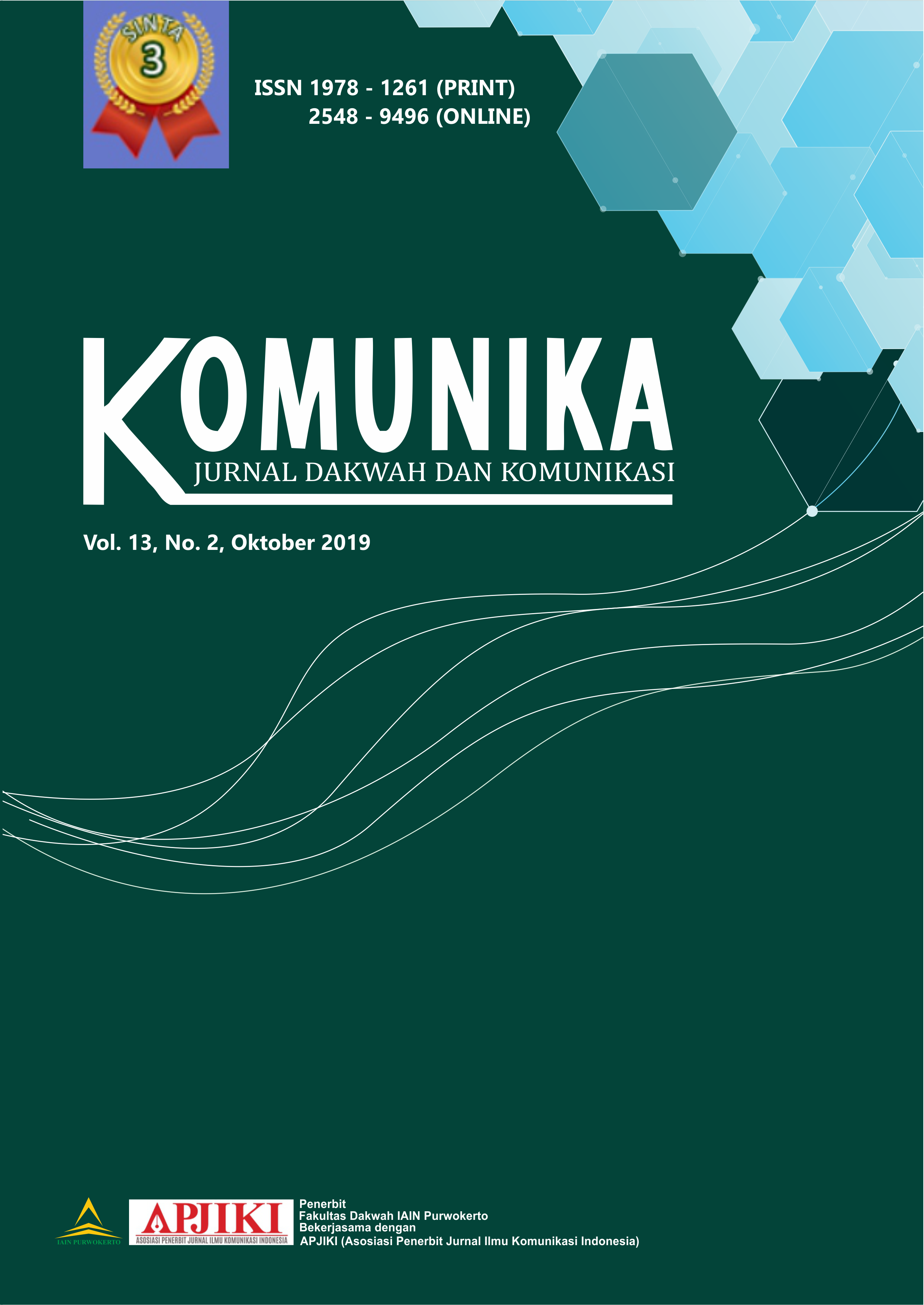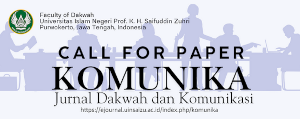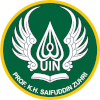Studi Media Filantropi Online: Pergeseran AltruismeTradisional-Karitas menuju Filantropi Integratif
DOI:
https://doi.org/10.24090/komunika.v13i2.2082Keywords:
e-Philanthropy, Islamic Altruism, disruptive 4.0, computer mediated communicationAbstract
Islamic philanthropic institutions as a medium for managing the potential of Islamic altruism are increasingly extending. Altruism activities shift from traditional charity become integrative philanthropy. The shift occurred in the manifestation of the spirit of altruism history of generosity among ummah. The development of the dynamics of social, cultural, political, and economic spaces contributed to the evaluation of the pattern of Islamic philanthropy. Inward bound the 4.0 disruption era, Islamic philanthropic institutions began to move more dynamically and contemplatively. E-philanthropy is one of the methods carried out by Islamic philanthropic institutions in approaching the development of expectations from benefactor and public profiles. Islamic philanthropic interactions that involve potential management institutions and benefactor communities become increasingly limitless space and time. This study aims to describe the convergence of non-profit activities of Islamic philanthropic institutions in the utilization of new media with social media platforms in the era of disruption 4.0. The results of the research discussion were obtained from the perspective of the theory of relationship development, attraction theory, accommodation theory, network theory, and computer-mediated communication (CMC). Further research can deepen from the perspective of good governance in Islamic philanthropic institutions. Lembaga filantropi Islam sebagai wadah pengelolaan potensi altruisme semakin bergeliat. Aktivitas altruisme bergeser dari tradisional-karitasmenjadi filantropi yang integratif. Pergeseran terjadi dalam manifestasi semangat altruisme rekam jejak kedermawanan umat.Altruisme konvensional mulai berbenah dan mulai menapaki jenjang skema filantropi kontemporer.Perkembangan dinamika ruang sosial, budaya, politik, dan ekonomi memberi kontribusi pada evaluasi pola filantropi Islam yang selama ini dilakukan.Memasuki Era Disrupsi 4.0 lembaga filantropi Islam mulai berbenah untuk dapat bergerak secara dinamis dan kontemplatif dalam konteks komunikasi dan adaptasi dengan tuntutan perubahan.E-filantropi menjadi salah satu metode yang dilakukan oleh lembaga filantropi Islam dalam mendekati perkembangan ekspektasi dari profil pendonor dan publik.Interaksi filantropi Islam yang melibatkan lembaga pengelola potensi dan masyarakat donatur menjadi semakin menempati nirbatas ruang dan waktu.Penelitian ini bertujuan untuk mendeskripsikan konvergensi aktivitas nirlaba lembaga filantropi Islam dalam pemanfaatan media baru dengan platform media sosial dalam era disrupsi 4.0.Hasil analisis dibahas dengan perspektif teori pengembangan hubungan, teori atraksi, teori akomodasi, teori jaringan dan Computer-Mediated Computer (CMC). Untuk riset selanjutnya dapat memperdalam dari perspektif tata kelola yang baik pada lembaga filantropi Islam.Downloads
Download data is not yet available.
References
Abdurahim, A., Sofyani, H., & Wibowo, S. A. (2018). Membangun Good Governance Di Lembaga Amil Zakat, Infaq Dan Sadaqah (LAZ): Pengalaman Dua LAZ Besar Di Indonesia. Jurnal Inferensi Vol. 12, No.1, Juni 2018, Doi : 10.18326/Infsl3v12i1.45-64.
Almarri, J. A. (2015). Social Entrepreneurship And Islamic Philanthropy. Int. J. Business And Globalisation, Vol. 15, No. 3, 405–424.
Bahjatullah, Q. M. (2016). Pengembangan Pemberdayaan Ekonomi Masyarakat Melalui Kegiatan Filantropi (Studi Kasus Lembaga Tazakka DIII Perbankan Syariah Iain Salatiga). . Jurnal Inferensi Vol.10,No.2, Desember 2016. , Doi :10.18326/Infsl3.V10i2.473-494.
Barton, G. (2014). The Gülen Movement, Muhammadiyah and Nahdlatul Ulama: Progressive Islamic Thought, Religious Philanthropy and Civil Society in Turkey and Indonesia. Islam and Christian–Muslim Relations Vol. 25, No. 3, 287–301, http://dx.doi.org/10.108.
Budiantoro, W. (2017). Dakwah di Era Digital. Komunika, 263-281 DOI 10.24090/komunika.v11i2.1369.
Denzin, N. K., & Lincoln, Y. S. (2005). The Sage Handbook Of Qualitative Research 3rd ed. London: Sage Publication.
DeVito, J. A. (2013). Interpersonal Communication Book 13th ed. Pearson Education.
Eisenberg, E. M., Jr., H. L., & Trethewey, A. (2010). Organizational Communication: Balancing Creativity And Constraint. Boston: Bedford/St.Martin’s.
Fauroni, R. L. (2011). Model Pemberdayaan Ekonomi Ala Pesantren Al-Ittifaq Rancabali Kab. Bandung. . Jurnal Inferensi Vol. 5, No. 1, Juni 2011, Fauroni, R Lukman. 2011. Model Pemberdayaan Ekonomi Ala PesaDOI: http://dx.doi.org/10.18326/infsl3.v5i1.1-17.
Fauzia, A. (2010). Religious giving di Indonesia: Studi kasus filantropi Islam. In Dialog, Jurnal Penelitian dan Kajian Agama, XXXIII (69), 51-64.
Fauzia, A. (2013). Faith and the State: A History of Islamic Philanthropy in Indonesia. leiden: Brill.
Fauzia, A. (2017). Islamic philanthropy in Indonesia: Modernization, islamization, and social justice. Austrian Journal of South-East Asian Studies, 10(2) , 223-236.
Floyd, K. (2011. ). Interpersonal Communication. New York: McGraw Hill.
Fuadi, A. (2012). Towards The Discourse Of Islamic Philanthropy For Social Justice In Indonesia. Jurnal Ilmu-Ilmu Keislaman Afkaruna. Vol. 8 No. 2 Juli - Desember 2012, 92-102 Doi 10.18196/Aiijis.2012.0008.
Ghafur, R. A. (2013). Pemberdayaan Masyarakat Melalui Optimalisasi Pengelolaan Wakaf Tunai (Studi Kasus Pada Laz Baitul Maal Hidayatullah Dan Yatim Mandiri Cabang Lampung). Jurnal Inferensi Vol. 7, No. 2, Desember 2013. , DOI: http://dx.doi.org/10.18.
Latief, H. (2010). Transforming the Culture of Giving in Indonesia: The Muslim Middle Class, Crisis and Philanthropy. Jepang: Paper dipresentasikan pada Nanzan University Asia-Pacific Research Center Laporan No. 11.
Littlejohn, S. W. (2000). Theories of Human Communication 7th ed. London: Wardsworth Publishing.
Littlejohn, S. W., & Foss, K. A. (2009). Encyclopedia of Communication Theory. London: Sage Publication.
Mahfud, C. (2018). Filantropi Islam Di Komunitas Muslim Tionghoa Surabaya: Ikhtiar Manajemen Zakat Untuk Kesejahteraan Dan Harmoni Sosial. Jurnal Inferensi Vol.12,No.1, Juni 2018, Doi : 10.18326/infsl3v12i1.149-176.
Marien, M. (1996). New communications technology: a survey of impacts and issues. Telecommunications Policy, 20(5), 375–387.
Marwell, G., & Schmitt, D. R. (1967). Dimensions of Compliance-Gaining Behavior: An Empirical Analysis. . Sociometry, Vol. 30, No. 4 (Dec., 1967) , 350-364.
Miles, M. B., & Huberman, A. M. (1994). Qualitative Data Analysis. London: Sage Publication.
Munadi, M., & Susilayati, M. (2016). Kinerja Lembaga Zakat Dalam Pemberdayaan Ummat (Studi Pada Web Dompet Dhuafa, LAZISNU dan LAZIS Muhammadiyah). Jurnal Inferensi Vol. 10, No.2, Desember 2016, 289-308 Doi. 10.18326/infsl3.v10i2.289-308.
Nasrullah. (2015). Regulasi Zakat Dan Penerapan Zakat Produktif Sebagai Penunjang Pemberdayaan Masyarakat (Studi Kasus Pada Baitul Mal Kabupaten Aceh Utara). . Jurnal Inferensi Vol. 9, No. 1, Juni 2015. , DOI http://dx.doi.org/10.18326/infsl3.v9i1.1-24.
Neuman, L. W. (2007). Basics of Social Reseearch. Qualitative and Quantitative Approaches. Pearson Education.
O'Leary, S. D., & Brasher, B. E. (1996). The Unknown God of the Internet: Religious Communication from the Ancient Agora to the Virtual Forum. In C. E. (ed), Philosophical Perspectives on Computer-Mediated Communication (p. 233). Albany: State University of New York.
Rakhmawati, Y. (2016). Hibriditas New Media Komunikasi dan Homogenisasi Budaya . Jurnal Komunikasi. Vol. X No. 02, September 2016, 117-128.
Retsikas, K. (2014). Reconceptualising Zakat In Indonesia. Indonesia And The Malay World. 42:124, 337-357.
Sakai, M. (2014). Establishing Social Justice Through Financial Inclusivity: Islamic Propagation by Islamic Savings and Credit Cooperatives in Indonesia. TRaNS: Trans –Regional and -National Studies of Southeast Asia. 2 pp 201-222 , doi:10.1017/trn.2014 .
Sriyana, J. (2013). Peran BMT Dalam Mengatasi Kemiskinan Di Kabupaten Bantul. . Jurnal Inferensi Vol. 7, No. 1, Juni 2013. , DOI: http://dx.doi.org/10.18326/infsl3.v7i1.29-50 .
Strauss, A. L., & Corbin, J. M. (1998). Basics of Qualitative Research : Techniques and Procedures for Developing Grounded Theory. London: Sage Publication.
Sulaiman, A. I., Chusmeru, & Masrukin. (2018). Strategy of Cooperative Islamic Boarding School as Economic Empowerment Community. Jurnal Inferensi Vol. 12, No.1, Juni 2018, Doi: 10.18326/infsl3v12i1.25-44.
Thurlow, C., Lengel, L., & Tomic, A. (2004). Computer Mediated Communication : Social Interaction And The Internet. London: Sage Publication.
Tracy, S. J. (2013). Qualitative Research Methods Collecting Evidence, Crafting Analysis, Communicating Impact. West Sussex: Blackwell Publishing.
Walther, J. B. (1996). Computer-Mediated Communication. Communication Research. 23(1), 3–43.
Almarri, J. A. (2015). Social Entrepreneurship And Islamic Philanthropy. Int. J. Business And Globalisation, Vol. 15, No. 3, 405–424.
Bahjatullah, Q. M. (2016). Pengembangan Pemberdayaan Ekonomi Masyarakat Melalui Kegiatan Filantropi (Studi Kasus Lembaga Tazakka DIII Perbankan Syariah Iain Salatiga). . Jurnal Inferensi Vol.10,No.2, Desember 2016. , Doi :10.18326/Infsl3.V10i2.473-494.
Barton, G. (2014). The Gülen Movement, Muhammadiyah and Nahdlatul Ulama: Progressive Islamic Thought, Religious Philanthropy and Civil Society in Turkey and Indonesia. Islam and Christian–Muslim Relations Vol. 25, No. 3, 287–301, http://dx.doi.org/10.108.
Budiantoro, W. (2017). Dakwah di Era Digital. Komunika, 263-281 DOI 10.24090/komunika.v11i2.1369.
Denzin, N. K., & Lincoln, Y. S. (2005). The Sage Handbook Of Qualitative Research 3rd ed. London: Sage Publication.
DeVito, J. A. (2013). Interpersonal Communication Book 13th ed. Pearson Education.
Eisenberg, E. M., Jr., H. L., & Trethewey, A. (2010). Organizational Communication: Balancing Creativity And Constraint. Boston: Bedford/St.Martin’s.
Fauroni, R. L. (2011). Model Pemberdayaan Ekonomi Ala Pesantren Al-Ittifaq Rancabali Kab. Bandung. . Jurnal Inferensi Vol. 5, No. 1, Juni 2011, Fauroni, R Lukman. 2011. Model Pemberdayaan Ekonomi Ala PesaDOI: http://dx.doi.org/10.18326/infsl3.v5i1.1-17.
Fauzia, A. (2010). Religious giving di Indonesia: Studi kasus filantropi Islam. In Dialog, Jurnal Penelitian dan Kajian Agama, XXXIII (69), 51-64.
Fauzia, A. (2013). Faith and the State: A History of Islamic Philanthropy in Indonesia. leiden: Brill.
Fauzia, A. (2017). Islamic philanthropy in Indonesia: Modernization, islamization, and social justice. Austrian Journal of South-East Asian Studies, 10(2) , 223-236.
Floyd, K. (2011. ). Interpersonal Communication. New York: McGraw Hill.
Fuadi, A. (2012). Towards The Discourse Of Islamic Philanthropy For Social Justice In Indonesia. Jurnal Ilmu-Ilmu Keislaman Afkaruna. Vol. 8 No. 2 Juli - Desember 2012, 92-102 Doi 10.18196/Aiijis.2012.0008.
Ghafur, R. A. (2013). Pemberdayaan Masyarakat Melalui Optimalisasi Pengelolaan Wakaf Tunai (Studi Kasus Pada Laz Baitul Maal Hidayatullah Dan Yatim Mandiri Cabang Lampung). Jurnal Inferensi Vol. 7, No. 2, Desember 2013. , DOI: http://dx.doi.org/10.18.
Latief, H. (2010). Transforming the Culture of Giving in Indonesia: The Muslim Middle Class, Crisis and Philanthropy. Jepang: Paper dipresentasikan pada Nanzan University Asia-Pacific Research Center Laporan No. 11.
Littlejohn, S. W. (2000). Theories of Human Communication 7th ed. London: Wardsworth Publishing.
Littlejohn, S. W., & Foss, K. A. (2009). Encyclopedia of Communication Theory. London: Sage Publication.
Mahfud, C. (2018). Filantropi Islam Di Komunitas Muslim Tionghoa Surabaya: Ikhtiar Manajemen Zakat Untuk Kesejahteraan Dan Harmoni Sosial. Jurnal Inferensi Vol.12,No.1, Juni 2018, Doi : 10.18326/infsl3v12i1.149-176.
Marien, M. (1996). New communications technology: a survey of impacts and issues. Telecommunications Policy, 20(5), 375–387.
Marwell, G., & Schmitt, D. R. (1967). Dimensions of Compliance-Gaining Behavior: An Empirical Analysis. . Sociometry, Vol. 30, No. 4 (Dec., 1967) , 350-364.
Miles, M. B., & Huberman, A. M. (1994). Qualitative Data Analysis. London: Sage Publication.
Munadi, M., & Susilayati, M. (2016). Kinerja Lembaga Zakat Dalam Pemberdayaan Ummat (Studi Pada Web Dompet Dhuafa, LAZISNU dan LAZIS Muhammadiyah). Jurnal Inferensi Vol. 10, No.2, Desember 2016, 289-308 Doi. 10.18326/infsl3.v10i2.289-308.
Nasrullah. (2015). Regulasi Zakat Dan Penerapan Zakat Produktif Sebagai Penunjang Pemberdayaan Masyarakat (Studi Kasus Pada Baitul Mal Kabupaten Aceh Utara). . Jurnal Inferensi Vol. 9, No. 1, Juni 2015. , DOI http://dx.doi.org/10.18326/infsl3.v9i1.1-24.
Neuman, L. W. (2007). Basics of Social Reseearch. Qualitative and Quantitative Approaches. Pearson Education.
O'Leary, S. D., & Brasher, B. E. (1996). The Unknown God of the Internet: Religious Communication from the Ancient Agora to the Virtual Forum. In C. E. (ed), Philosophical Perspectives on Computer-Mediated Communication (p. 233). Albany: State University of New York.
Rakhmawati, Y. (2016). Hibriditas New Media Komunikasi dan Homogenisasi Budaya . Jurnal Komunikasi. Vol. X No. 02, September 2016, 117-128.
Retsikas, K. (2014). Reconceptualising Zakat In Indonesia. Indonesia And The Malay World. 42:124, 337-357.
Sakai, M. (2014). Establishing Social Justice Through Financial Inclusivity: Islamic Propagation by Islamic Savings and Credit Cooperatives in Indonesia. TRaNS: Trans –Regional and -National Studies of Southeast Asia. 2 pp 201-222 , doi:10.1017/trn.2014 .
Sriyana, J. (2013). Peran BMT Dalam Mengatasi Kemiskinan Di Kabupaten Bantul. . Jurnal Inferensi Vol. 7, No. 1, Juni 2013. , DOI: http://dx.doi.org/10.18326/infsl3.v7i1.29-50 .
Strauss, A. L., & Corbin, J. M. (1998). Basics of Qualitative Research : Techniques and Procedures for Developing Grounded Theory. London: Sage Publication.
Sulaiman, A. I., Chusmeru, & Masrukin. (2018). Strategy of Cooperative Islamic Boarding School as Economic Empowerment Community. Jurnal Inferensi Vol. 12, No.1, Juni 2018, Doi: 10.18326/infsl3v12i1.25-44.
Thurlow, C., Lengel, L., & Tomic, A. (2004). Computer Mediated Communication : Social Interaction And The Internet. London: Sage Publication.
Tracy, S. J. (2013). Qualitative Research Methods Collecting Evidence, Crafting Analysis, Communicating Impact. West Sussex: Blackwell Publishing.
Walther, J. B. (1996). Computer-Mediated Communication. Communication Research. 23(1), 3–43.
Downloads
Published
2019-09-30
Issue
Section
Articles
License
Authors who publish with this journal agree to the following terms:
- Authors retain copyright and grant the journal right of first publication with the work simultaneously licensed under a Creative Commons Attribution-ShareAlike 4.0 International License that allows others to share the work with an acknowledgement of the work's authorship and initial publication in this journal.
- Authors are able to enter into separate, additional contractual arrangements for the non-exclusive distribution of the journal's published version of the work (e.g., post it to an institutional repository or publish it in a book), with an acknowledgement of its initial publication in this journal.
- Authors are permitted and encouraged to post their work online (e.g., in institutional repositories or on their website) prior to and during the submission process, as it can lead to productive exchanges, as well as earlier and greater citation of published work (See The Effect of Open Access).

























